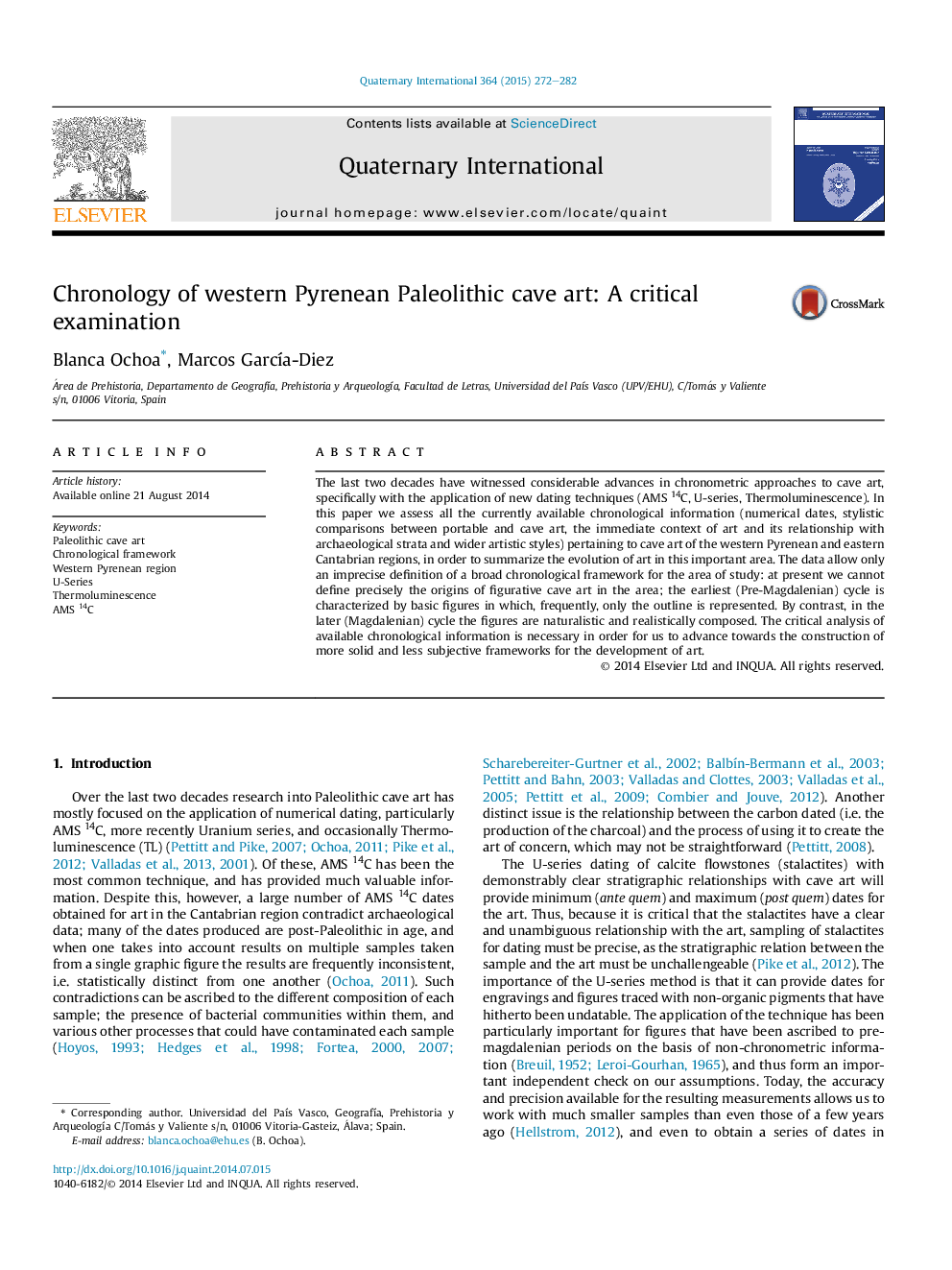| Article ID | Journal | Published Year | Pages | File Type |
|---|---|---|---|---|
| 1040891 | Quaternary International | 2015 | 11 Pages |
The last two decades have witnessed considerable advances in chronometric approaches to cave art, specifically with the application of new dating techniques (AMS 14C, U-series, Thermoluminescence). In this paper we assess all the currently available chronological information (numerical dates, stylistic comparisons between portable and cave art, the immediate context of art and its relationship with archaeological strata and wider artistic styles) pertaining to cave art of the western Pyrenean and eastern Cantabrian regions, in order to summarize the evolution of art in this important area. The data allow only an imprecise definition of a broad chronological framework for the area of study: at present we cannot define precisely the origins of figurative cave art in the area; the earliest (Pre-Magdalenian) cycle is characterized by basic figures in which, frequently, only the outline is represented. By contrast, in the later (Magdalenian) cycle the figures are naturalistic and realistically composed. The critical analysis of available chronological information is necessary in order for us to advance towards the construction of more solid and less subjective frameworks for the development of art.
